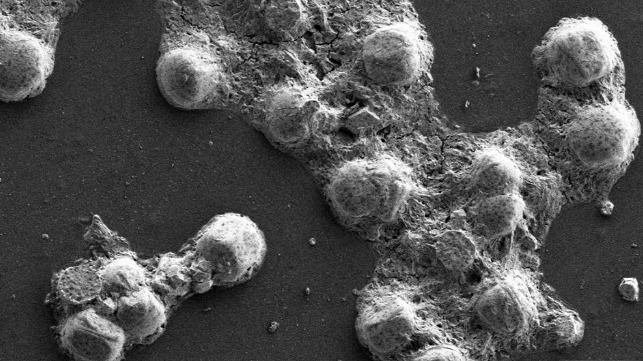Study: Marine Life May Mistake Nanoplastics for Food

A team of scientists from Heriot-Watt University have found that ultra-small particles of plastic can join with bacteria, algae and other organic particles in seawater within minutes, forming larger clumps that could affect the marine food chain.
"This is a first step towards understanding how nanoplastics interact with natural biopolymers throughout the world's oceans," said Dr. Stephen Summers, one of the study's authors. "We found that the biopolymers envelope or engulf the nanoplastic particles, which caused the plastics to agglomerate into clumps. The nanoplastics, which are 100-200 times smaller than a bacterial cell, were actually incorporated into the agglomerates, which became visible to the naked eye in our lab experiments."
Nanoplastics are an invisible but important constituent of ocean plastic pollution. Larger plastic debris degrades with exposure to sunlight, and some of the resulting detritus is less than 100 nm in size - about one thousand times smaller than the width of a human hair. The effects of these substances on the marine environment is little understood.
According to lead author Dr. Tony Gutierrez, the nanoplastic clumps his team observed are similar to "marine snow" - the organic matter that falls from the ocean's surface to the deep, where it provides food for little-studied deep sea ecosystems. Future research efforts could investigate how these man-made plastic substances affect the food chain of the oceans.
"Heavier plastics could drive marine snow to fall at a faster rate to the sea floor, while the opposite could happen with lighter forms of plastics in making it more buoyant and to fall more slowly. In that case, deep-sea ecosystems could become starved of food," said Gutierrez.
The study was conducted as part of the RealRiskNano project, funded by NERC in collaboration with Plymouth University. The project aims to evaluate the potential risks that nanometer-scale plastic debris could create in an aquatic environment.
